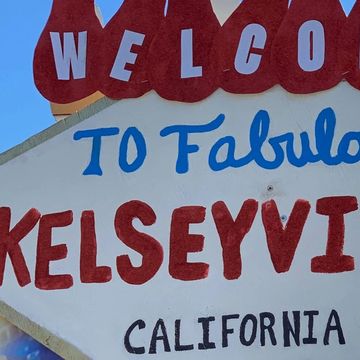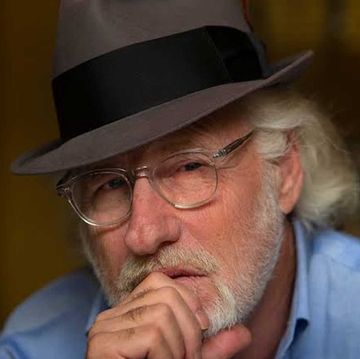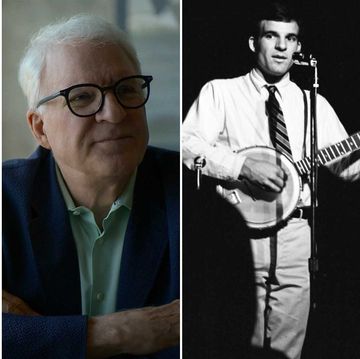Even for California, a state known for wild weather, the winter of 2022–23 was especially brutal. Rain-engorged rivers chewed through levees, violent waves washed away piers, and massive runoff opened a sinkhole in Los Angeles that swallowed two cars and four people. Snowfall buried entire towns, and the Sierra Nevada recorded its deepest snowpack in 40 years. By early March, a series of intense storms had caused at least 24 deaths and, by some estimates, $7 billion in damage.
As climate change warps weather patterns around the world, extreme is becoming the new normal. Virtually every year brings a new slate of disaster records: rain, flooding, snowfall, wildfires, drought. But as grim as this past winter was, the state has seen worse—much worse.
This article appears in Issue 24 of Alta Journal.
SUBSCRIBE
At the start of the Civil War, California suffered through a winter like no one alive had ever experienced. A series of storms dumped 10 feet of precipitation in six weeks and turned the Central Valley into a lake the size of North Dakota. The Big Flood of 1862, the largest in the history of the West Coast, ruined the livelihoods of almost every farmer and rancher in the nascent state, and 160 years later, it still serves as a grim warning: it wasn’t the first of its kind, and it won’t be the last. The next one may well be even worse.
The rains started in earnest in late November 1861. It had been seven months since Confederate forces had opened fire on Fort Sumter, but on the far end of the country, the residents of the young state of California were more focused on what came next now that the gold rush was winding down. The state’s population had more than quadrupled over the past decade, to 380,000, and the economy, fueled in large part by mining riches, was starting to boom. California was taking its first steps toward becoming the Golden State.
Recent arrivals quickly learned that winter rains were as much a part of life as the summer sun. But this year was different. Storm after storm rolled down the Pacific coast, and the skies never seemed to clear. As Christmas came and went, rivers across the state began overflowing, sweeping away buildings, dams, farms, and eventually entire towns.
In the Central Valley, the banks of the Sacramento River were littered with dead cattle, furniture, and mangled machinery, until the rising water covered everything. Nearly every bridge in the region was washed away, and hundreds of landslides and debris flows scoured the slopes of the Sierra and the Coast Ranges. The floods came so quickly that sometimes people had barely an hour’s warning. The lucky ones had upper floors they could move into. Those in one-story houses climbed onto roofs or fled for safety. People scrambled into and onto anything they could grab to stay out of the icy, muddy water—washbasins, barrels, bathtubs, doors—or just waited and prayed for rescue.
In Marysville, up in gold country, a grandmother and her young grandson climbed a tall tombstone and were stuck there all night, according to William J. Cowan, who intensively researched the flood for his doctoral dissertation at the University of Southern California. In the Central Valley, a farmer scrambled up the tallest tree he could find and watched as a house floated by. On the roof, a man played the banjo and sang with his wife; eventually, they drifted out of sight.
None of the major cities escaped destruction. It rained for 28 days straight in Los Angeles, and the San Diego River became so engorged that it cut an entirely new channel to the sea. So much water flowed into the San Francisco Bay that it rose by half a foot and the tides briefly stopped. In a later account, a local reverend described what he’d seen out his second-story window:
The scenes of horror…defy description. Cracking, falling, floating houses; businessmen ruined in an hour; strong men struggling for life in the current of our streets. Many of all ages and both sexes clinging to houses and floodwood, shrieking in despair, some sinking in death, and flood still rising!
Sacramento, on a low floodplain at the junction of the American and Sacramento Rivers, was already notorious for repeated flooding. Eight years earlier, the capital had raised its business district by four feet and built levees along both rivers up to 20 feet high.
None of that mattered when the Sacramento River rose by 22 feet. When a levee gave way on December 9, the city flooded with incredible speed. Guests at the old City Hotel had just ordered dinner when water started to trickle in. Men carried women in their chairs to the stairway, while others climbed onto the tables. Finally, everyone had to scramble upstairs as the first floor filled completely.
Eventually, every road into and out of Sacramento became impassible; the only way to reach the capital was by water. With communications cut off between the coast and the interior—in many places, the telegraph poles were underwater—the machinery of government ground to a halt. California’s state legislature and Supreme Court both had to relocate to San Francisco, and when another levee broke on January 10, governor-elect Leland Stanford had to travel to his own inauguration ceremony by boat.
By the end of January, most of the Central Valley had become a vast lake that some witnesses reported was 12 feet deep and 500 miles long by 150 miles wide. Steamers were the primary form of transportation on the “Great Lake of California,” plucking survivors from rooftops and ferrying supplies and information. Pilots dodged floating oak trees with trunks 10 feet in diameter. Sometimes they could identify river channels only by following the tops of cottonwoods poking out of the brown water.
Preachers declared that the devastation was punishment for the greed and hubris that had come to rule the state during the gold rush. William Brewer, a New York botanist who had recently been commissioned to survey California’s geology, tried in vain to convey the experience in a letter home. “No description that I can write will give you any adequate conception of the discomfort and wretchedness,” he wrote.
A century and a half later, California is a very different place. It’s the fifth-largest economy in the world and has about the same population as Canada. More than six million people live in the Central Valley alone, where a $17 billion agricultural industry supplies about a quarter of the country’s food.
California’s weather extremes, driven by climate change, have become even more intense. The three years before the winter of 2022–23 were the driest on record, and the state is starting to plan for the very real chance that 10 percent of its water supply for agricultural, urban, and environmental purposes will be gone in less than two decades. Drier conditions mean more wildfires, which is part of the reason 4 percent of California went up in flames in 2020, the worst fire season in the state’s history.
As reservoirs shrink and forests burn, it can be easy to forget about the risk of flooding, says Daniel Swain, a climate scientist at UCLA’s Institute of the Environment and Sustainability. “We get modest quakes all the time, modest fires every year,” he says. “But we don’t get modest floods. Sometimes we have to wait decades between those. I think that affects our sense of what is possible. Out of sight, out of mind.”
And when contemplating sheer devastation, nothing comes close to a statewide inundation. Swain is a coauthor of a recent study that tries to predict what the effect of a flood along the lines of 1861–62 would be if it hit California today. The answer? Apocalyptic.
Swain’s work builds on a report commissioned by the United States Geological Survey (USGS) in 2011 to help the state prepare for a “megaflood.” The 200-page document, a collaboration between 117 scientists, engineers, and public policy experts, introduced a term that sounds straight out of 1970s sci-fi: ARkStorm.
The 2011 report’s hypothetical disaster is caused by a continuous series of storms hitting the West Coast, similar to what happened 160 years ago. Each storm is driven by a weather phenomenon with which Californians have become painfully familiar: an atmospheric river. First identified in the late 1990s, these mile-high belts of water vapor can extend for thousands of miles across the Pacific. When atmospheric rivers hit mountains, like California’s Coast Ranges or the Sierra Nevada, they do what clouds do: rise, cool, and release their moisture as rain or snow.
On the West Coast, individual atmospheric rivers can carry 10 to 15 times as much water as the Mississippi River. They’re crucial for California, filling lakes and rivers and recharging aquifers. One study found that atmospheric rivers supplied up to half of the state’s water between 1950 and 2010—in just 10 days out of each year.
But when these freight trains of moisture arrive one after the other, with little or no time in between to recover, things start to get scary fast. The USGS study, called ARkStorm 1.0, imagined unusually strong atmospheric rivers arriving in sequence, affecting most of California. (The name includes a combination of AR for “atmospheric river” and k for 1,000, as in a 1-in-1,000-year event.) The result is 23 days of precipitation, compared with 45 days in 1861–62.
After more than three weeks of storms, ARkStorm 1.0 estimated, flooding could stretch from Oregon to the Mexican border and as far east as Nevada, with water up to 20 feet deep. Once again, the Central Valley, Sacramento included, could become an inland sea, this time 300 miles long by 20 miles wide. The disaster could force 1.5 million people to evacuate affected areas, bring the agricultural industry to a halt for months, and cause about $725 billion in damage. That would make it the most expensive geophysical disaster in U.S. history, more than three times as expensive as a possible earthquake on the San Andreas Fault as strong as the one that destroyed San Francisco in 1906.
Eleven years after ARkStorm 1.0, Swain and his colleagues crunched the data using more sophisticated mathematical models. The ARkStorm 2.0 project also took climate change into account. Warm air can hold more moisture, which means more rain—and snow that melts more quickly into runoff when spring arrives. As one example, the two atmospheric rivers that damaged Northern California’s Oroville Dam in 2017, prompting the evacuation of 188,000 people, dropped up to 15 percent more rain because of the warming climate.
The study found that the overall odds of a megaflood occurring have doubled over the past century and will likely increase. Swain says it’s more likely than not—his calculations estimated a 66 percent chance—that at least one will hit by 2060.
Of course, it’s impossible to predict when. But buried layers of silt from historical floods show that over the past few millennia, megafloods that were as bad as or worse than 1861–62 have struck California, on average, about every 200 years.
The closest modern analogy would be what happened in Pakistan in 2022, when a historic monsoon season left a third of the country underwater, says Jason Cordeira, a specialist in atmospheric rivers at the Center for Western Weather and Water Extremes at UC San Diego’s Scripps Institution of Oceanography. “The statistics say it will happen,” Cordeira adds. “It’s just a matter of time.”
Much of California’s infrastructure dates to the 1950s and was designed to protect major urban centers against extreme flooding events that were thought to be rare. But with the odds of their occurrence going up each year, a massive number of complicated, expensive, politically fraught projects need to get underway. Dams and levees have to be repaired, upgraded, or moved. Building development in floodplains needs to be slowed, even reversed, which could require government agencies to buy up expensive riverside land.
The overall price tag will be astronomical—over $30 billion, by some estimates—and the work will take decades. But the biggest hurdle may be psychological, Swain says. “It’s been extremely challenging to get buy-in and funding. Everyone wants to talk about wildfire and drought.”
“I think the issue really is the narrative,” he adds. It’s hard to convince people to care about something that hasn’t happened in generations, especially when there are more immediate, dramatic alternatives. “Floods aren’t part of our popular culture like quakes and fires always have been,” he says. “Why aren’t there trashy disaster movies about climate events?”
To help get the word out, Swain has even pitched the idea to screenwriters in Hollywood. Imagine the Los Angeles River, now largely a concrete channel through the city, overwhelmed by storm runoff, he says. Suddenly you have high-velocity floodwaters shooting at movie studios and apartment buildings along the riverbank like God’s own fire hose. So far, there hasn’t been any interest.
Complex, large-scale public works projects demand coordination between local, state, and federal governments and agencies. And one key requirement is the belief that a megaflood is possible in the first place. “It does align very much with your politics about climate change,” Swain says. “I get very angry emails from folks who operate critical pieces of water infrastructure who say that all of this is physically impossible and is a figment of a certain political party’s imagination.”
Then there’s the question of how much flood-control infrastructure is enough. “There’s a real danger in imagining we are prepared,” says Michael Dettinger, a research hydrologist at Scripps and a coauthor of ARkStorm 1.0. “My god, there are whole flood-control districts that are really in that mode. It’s like, no.” On a megaflood-readiness scale of 1 to 10, he says he’d give the state a 4. “Maybe less.”
Sacramento, now recognized as one of the most flood-prone cities in the country, serves as an example of how the wheels of progress are turning and of how far they still have to go. In 1986, after three atmospheric rivers in a row inundated the city with 10 inches of rain in 11 days, Sacramento launched a complete overhaul of its flood-management system.
The work involves strengthening and rebuilding the city’s 106 miles of levees; raising the Folsom Dam, on the American River, by 3.5 feet; and expanding a wide, flat area called the Yolo Bypass, which redirects spillover from the Sacramento River around the city. By 2035, for the price of $5 billion, Sacramento hopes to be ready for a 1-in-500-year flood.
This past December, California adopted the Central Valley Flood Protection Plan, a 30-year, $25 billion–$30 billion blueprint to prepare the valley for extreme flood events. Two weeks later, the first atmospheric rivers of the winter season arrived. The 31st hit the state in April.
The misery of 1862 dragged on through February. In early March, the botanist William Brewer reported from Sacramento that “most of the city is still underwater and has been for three months.” When he could finally leave the drowned capital, he saw “houses here and there in the waste of waters or perched on some little knoll now an island.… Nearly every house and farm over this immense region is gone.”
In Nevada, a 26-year-old adventurer named Samuel Clemens found himself stranded at an inn near Carson. “As far as the eye could reach, in the moonlight, there was no desert visible, but only a level waste of shining water,” he wrote.
Flooding then turned to freezing as one of the coldest seasons on record gripped the West Coast from British Columbia to Baja California. The Big Winter brought record-setting snowfall and even froze the Columbia River solid. Soon after escaping from the inn, Clemens and two companions barely survived being lost in a blizzard. The ordeals ended up as part of Mark Twain’s classic book Roughing It.
By the time it was finally over, the winter of 1861–62 had caused the most extensive and expensive floods in the recorded history of the American West. Agua Mansa, or Gentle Water, at the time the largest community between Los Angeles and New Mexico, was wiped out. Some two dozen towns and settlements in Oregon and Idaho were erased from the map. Officials estimated that more than 4,000 people were killed in California, roughly 1 percent of the population, as were a quarter of the state’s cattle herds. The floods destroyed a third of the taxable property in California and left the state bankrupt. Farm machinery and other detritus were found lodged high in the branches of trees for years.
There wasn’t much people could have done to avert the disaster, although they might have followed the example of Indigenous people and early settlers from Mexico, who had learned to build on high ground to avoid floods. Instead, as an editorial in the Placer Herald reported, “Living eight or ten years in the country we have assumed to know more of the country, than the Mexican or Indian.”
Weather forecasting at the time was little better than guesswork—about as useful as the white settlers’ hubris—and the state had just started building its first levees and reservoirs. Today, there’s recognition that we can only prepare so much against extreme weather events. “It’s not so unreasonable to hear a flood-control engineer saying that beyond a certain point, there’s nothing we can do about it,” Swain says. “That is true; it’s just reality.”
Of course, that doesn’t mean we shouldn’t be gearing up for the next Big Flood, in terms of both minimizing its immediate effects and dealing with the aftermath. California is no stranger to large-scale disaster planning; in 2008, some 5.4 million people participated in the first Great Southern California ShakeOut, the largest earthquake-
preparedness drill ever, which has since grown into an annual statewide event.
The bottom line is that the effects of extreme weather have been and always will be part of the price of living in a place with all of California’s benefits, Swain says. “Recognizing that and planning for it as an inevitability is different than just throwing up your hands and saying, Ah well, let’s just not talk about it.”
It’s a challenge that’s been around since the aftermath of the Great Flood. “Human energy—and particularly that of the pioneers of this State, can effect a great deal,” noted an editorial in the Placer Herald in November 1862. “But whether it would be wise to enter into a regular warfare with the elements is a proposition that may well stagger the bravest heart among us.”•

Julian Smith is an award-winning nonfiction journalist specializing in history, science, and travel. His work appears in Smithsonian, Wired, Outside, National Geographic Traveler, and the Washington Post. His most recent book, Aloha Rodeo: Three Hawaiian Cowboys, the World’s Greatest Rodeo, and a Hidden History of the American West, won the 2020 Oregon Book Award. He lives in Portland, Oregon, with his family.















